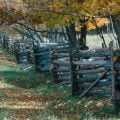Launching a flower farm is an endeavor that has gained popularity in recent years
Appealing to those eager to blend their love for nature with entrepreneurial aspirations. Whether motivated by their aesthetic appeal or their profit potential, establishing a flower farm offers distinct possibilities.
However, stepping into the floral agriculture sphere is not without its challenges. It demands careful thought, strategic planning, and a wealth of knowledge to ensure a successful start and sustainable growth. Here are pivotal steps and considerations to help you lay the groundwork for a prosperous flower farm.
Planning: The First Step to Start A Flower Farm
Clarifying Your Vision
Before embarking on your flower farming journey, it’s vital to reflect on your aspirations. Are you aiming for a large-scale operation with employees or a smaller, self-managed farm? Your decision will shape every facet of your business, from its initial setup to its operational strategies.

Market Analysis
A deep understanding of the local market is critical. Analyzing competitors and pinpointing what sets your farm apart is key. Determining your unique selling proposition early can significantly impact your venture’s success.
Financial Strategy
The backbone of any business is its financial strategy. Setting clear financial objectives and formulating a plan to achieve them are fundamental steps. This encompasses managing startup expenses, production planning, and pricing strategies.
How To Start A Flower Farm On A Production-Level
Education and Experience
Knowledge is the first step towards a flourishing flower farm. Acquiring a fundamental education in horticulture and gaining practical experience by working on an established farm are invaluable. This combination of hands-on experience and theoretical knowledge will equip you with the necessary skills for managing your production effectively.
Selection and Timing
Knowing which flowers to grow and the optimal time for planting is crucial. Familiarize yourself with the specific requirements of each species you plan to cultivate, including their growth conditions and maintenance needs.
Sustainable Practices
Implementing eco-friendly cultivation methods benefits not only the environment but also serves as a powerful marketing tool. Consumers increasingly prefer flowers that are sustainably grown, reflecting a growing consciousness about environmental impact.

Navigating Sales and Marketing
Securing Sales
Channels Identifying and securing your sales outlets is crucial even before your growing season starts. Options include direct sales to consumers, partnerships with local florists, or retail distribution.
Building an Online Presence
In the digital age, an effective online presence is indispensable. Utilize social media, an engaging website, and newsletters to promote your farm and connect with your audience.
Pricing Strategies
Determining the right price for your flowers is crucial. Avoid undervaluing your products, even in the early stages. Fair pricing mirrors the quality and effort invested in your flowers.
Starting a flower farm is an ambitious project that requires thorough preparation and commitment. Following these guidelines will help you lay a solid foundation for your flower farming enterprise.
If you’d like to deepen your understanding of different flower categories and perfect your cut flower growing techniques, consider enrolling in an online course, like The Flower Farm from The Market Gardener Institute. Whether you’re a beginner or a seasoned grower, this course will provide you with the knowledge and tools you need to successfully grow a wide variety of flowers, ensuring abundant harvests and a garden vibrant with color all year round.













